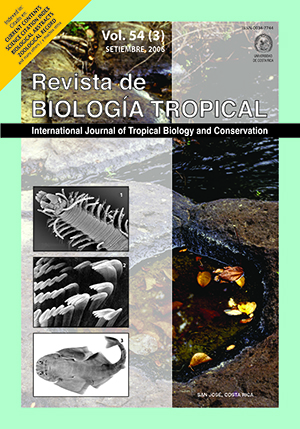Abstract
Dengue fever is a mosquito-borne viral disease, whose main biological vector is Aedes aegypti. This mosquito colonizes tropical areas where the disease is endemic. The most obvious action against dengue is attacking its vector. Biological control appears to be an alternative approach, using natural enemies of the mosquitoes, such as predatory copepods. Thus, the morphological study of the damage caused by copepods is important to understand its predatory capacity. Twenty-five A. aegypti larvae were exposed to the copepod Mesocyclops thermocyclopoides and the damage caused by the copepods was evaluated using scanning electron microscopy. The larvae showed damage mainly at the anal segment, the siphon and the abdomen; only three attacks to the head were observed. The size of the siphon might be of importance in determining whether or not a copepod will attack a mosquito larva.
Comments

This work is licensed under a Creative Commons Attribution 4.0 International License.
Copyright (c) 2006 Revista de Biología Tropical






